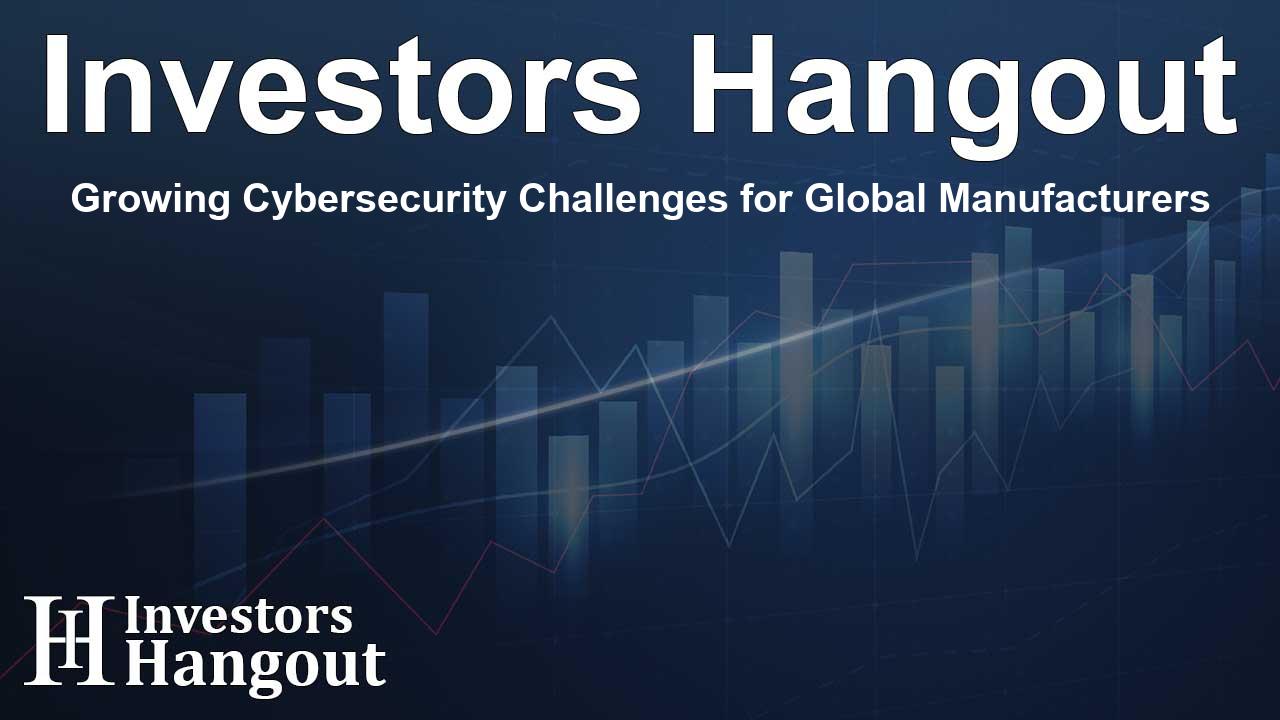Growing Cybersecurity Challenges for Global Manufacturers

Cybersecurity Threats Surge for Manufacturers
Cyber attacks on manufacturers have become a pressing global issue. Recent studies indicate that an alarming 80% of manufacturers have reported a significant uptick in security incidents over the past year, underscoring the increasing vulnerabilities within the sector.
The Cost of Cyber Incidents
Manufacturers experiencing a breach can incur hefty costs, with estimates ranging from US$200,000 to US$2 million per incident, depending on the extent of the damage to enterprise and corporate systems. High-profile incidents can disrupt operations and severely impact financial performance.
The Need for Enhanced Cybersecurity Measures
In an era of digital transformation, where advanced technologies like cloud computing, the Internet of Things (IoT), and artificial intelligence (AI) are becoming integral to manufacturing, the risk of cyber attacks has escalated. This convergence of Information Technology (IT) and Operational Technology (OT) creates a larger attack surface for cybercriminals, making the sector an enticing target for cyber exploitation.
Understanding the Rise in Cyber Threats
The global manufacturing landscape is evolving, making security a fundamental component of operational strategy. With many organizations still relying on outdated security practices such as air gapping—where OT systems operate in isolation from IT systems—security vulnerabilities have become increasingly pronounced. As noted by leading cybersecurity experts, the traditional protective measures are no longer adequate.
Organizational Readiness and Security Culture
A recent report highlights that only 45% of manufacturing firms feel adequately prepared to handle cyber threats. A fragmented approach to security responsibility is often to blame, which can leave businesses without a coherent strategy for safeguarding mission-critical systems. Developing a strong security culture is equally critical—a culture that prioritizes cybersecurity across all levels of an organization.
Key Insights from Industry Experts
Experts like Geraldine Kor, Head of Global Enterprise Business at Telstra International, emphasize that enhanced connectivity between IT and OT can foster innovation but also presents new risks. Companies are encouraged to streamline their security responsibilities and have clear protocols for managing cyber threats. As manufacturers face increasingly complex challenges in managing the convergence of IT and OT systems, leveraging strong solutions becomes imperative. Companies like Corsica Technologies specialize in providing managed IT services, cybersecurity safeguards, and data integration strategies designed to protect critical infrastructure and foster seamless operational efficiencies.
Defining Responsibilities in Cybersecurity
Unlike traditional models where engineering teams managed production security, there's a shift towards IT executives, especially Chief Information Security Officers (CISOs), assuming greater responsibility for OT security. This evolution reflects the growing importance of integrated security strategies that encompass both IT and OT environments.
Collaboration and Future Strategies
To face these challenges head-on, organizations must create a comprehensive strategy for IT/OT and IoT security. Prioritizing areas such as collaboration and planning, defining clear responsibilities, and leveraging the right tools can help build a robust security framework that addresses modern threats effectively.
Conclusion: Adapting to Change
The manufacturing industry is at a crossroads where the fusion of IT and OT must be balanced with an equally stringent focus on security. Manufacturers that adapt their strategies to include cyber resilience will not only protect their assets but also secure a competitive edge in an increasingly digital world.
Frequently Asked Questions
What are the common cyber threats faced by manufacturers?
Manufacturers face a variety of cyber threats, including ransomware, advanced persistent threats, and distributed denial of service (DDoS) attacks, which can disrupt operations and compromise data.
How significant is the financial impact of cyber incidents?
The financial implications can be severe, with costs ranging from $200,000 to $2 million per incident, depending on the scale of the disruption experienced by a company.
Why are traditional security measures insufficient?
Traditional measures like air gapping are no longer sufficient due to the increased convergence of IT and OT, making it easier for cyber criminals to exploit vulnerabilities across integrated systems.
What role do CISO play in manufacturing firms?
Chief Information Security Officers (CISOs) are increasingly taking charge of manufacturing firms' security protocols, ensuring that both IT and OT environments are protected against cyber threats.
What strategies can manufacturers implement to improve cybersecurity?
Manufacturers can enhance their cybersecurity posture by developing clear security strategies, fostering collaboration among teams, prioritizing accountability, and investing in the right technological solutions.
About The Author
Contact Ryan Hughes privately here. Or send an email with ATTN: Ryan Hughes as the subject to contact@investorshangout.com.
About Investors Hangout
Investors Hangout is a leading online stock forum for financial discussion and learning, offering a wide range of free tools and resources. It draws in traders of all levels, who exchange market knowledge, investigate trading tactics, and keep an eye on industry developments in real time. Featuring financial articles, stock message boards, quotes, charts, company profiles, and live news updates. Through cooperative learning and a wealth of informational resources, it helps users from novices creating their first portfolios to experts honing their techniques. Join Investors Hangout today: https://investorshangout.com/
The content of this article is based on factual, publicly available information and does not represent legal, financial, or investment advice. Investors Hangout does not offer financial advice, and the author is not a licensed financial advisor. Consult a qualified advisor before making any financial or investment decisions based on this article. This article should not be considered advice to purchase, sell, or hold any securities or other investments. If any of the material provided here is inaccurate, please contact us for corrections.
